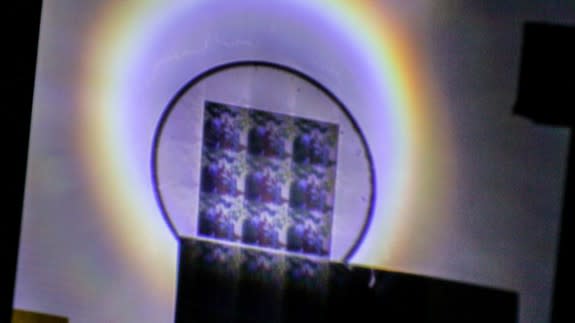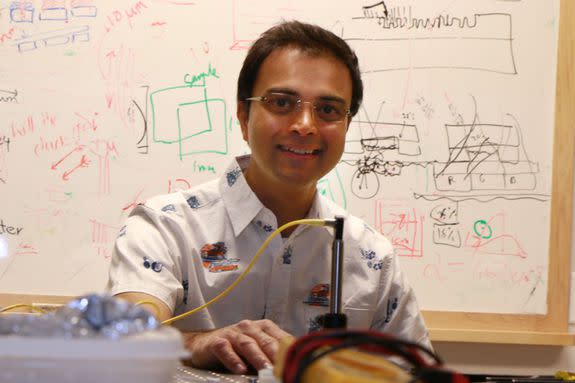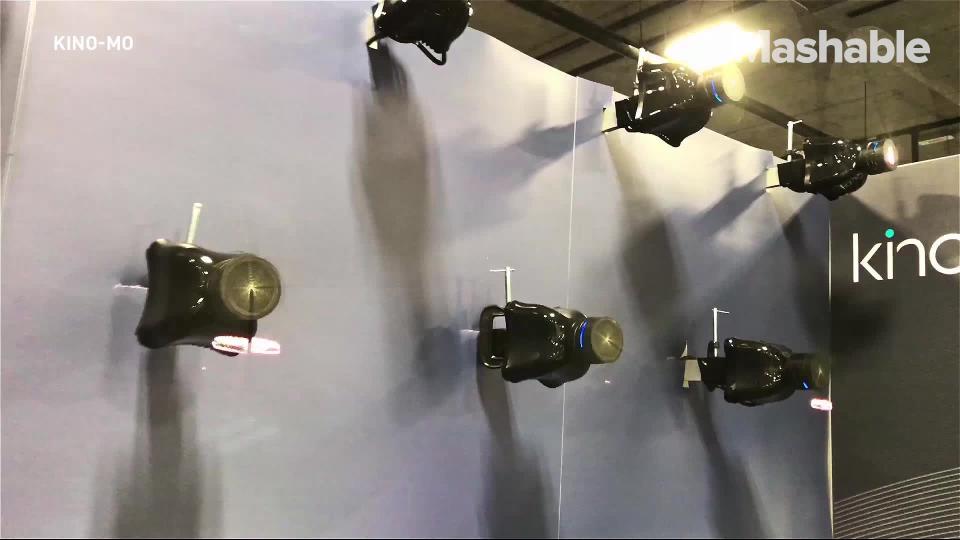This new hologram could make Star Wars chess a reality

The holographic chess match played between the droid R2-D2 and Chewbacca in Star Wars: A New Hope could become possible in the near future.
SEE ALSO: The world's first glasses-free holographic phone is coming, and it's not from Apple
Researchers from the University of Utah have developed an inexpensive way to create full-color 2D and 3D holograms. The scientists are able to produce brighter holograms than currently available and can be viewed at almost any angle, making them appear more realistic than ever before.
Rajesh Menon, assistant professor of electrical and computer engineering, led the team. Their research paper, "Full Color, Large Area, Transmissive Holograms Enabled by Multi-Level Diffractive Optics", was published in Scientific Reports on Wednesday.
Menon and his team read recent papers on hologram production and realized that they could do a significantly better job at a lower cost. Once the team got rolling, it only took them about two months to complete the project.
"Conventional holograms suffer from two big problems. First, their efficiency over a full color range is quite low. This results in holograms that are very dim. Second, the image projected by conventional holograms changes with viewing angle," said Menon, the lead researcher.
"We solved these problems by coming up with new ways of designing the nanostructures that make up the hologram and with new more precise ways of manufacturing these nanostructures," he added.
Basically, they use new algorithms to recycle white light by redirecting it, so it won't be absorbed into material nearby. Because none of the light is absorbed, it's all reused in the image, giving you brighter colors and a more realistic hologram.
Everyone on the team has always been fascinated by holograms, and Star Wars was one of their biggest inspirations. They believe that the new technology could even make the Chewbacca and R2-D2 chess game a reality.
These holograms could also be awesome additions to amusements rides and other entertainment, like the chess game, holographic photos and videos for advertising, and moving 3-D video. But it could also have larger implications beyond Hollywood.
Menon and his team believe the new holograms could be used to improve currency and identification badgers. They could create full-color photographs on foreign money to make them more identifiable. And if they were integrated into personal identification badges, like passports and driver's licenses, all an official would have to do is point a flashlight at them to make sure they're legitimate.
Because these holograms use less complicated technology than other holograms, it also means that they can be created more easily and at a lower cost.
"Its hard to predict costs because of many parameters that are outside the control of the technologist. Nevertheless, I am confident that the costs will be quite low, especially at high volumes," said Menon. "The manufacturing process that we can use for these holograms is similar to the ones used in security holograms in currency notes, credit cards, and ID cards. Therefore, we believe that the costs can be quite low."

Image: university of utah college of engineering
Although the team's holograms were only created in two dimensions, Menon thinks there is a lot of potential for more. It should be pretty straightforward to extend them into 3D and then 4D, which Menon described as 3D and time to create a holographic video.
"These can even be incorporated into virtual-reality or augmented-reality experiences in the future," said Menon. "I strongly believe that technologies such as these can dramatically enhance education, entertainment and many other fields in the future."
Menon also created a company called PointSpectrum to research the new technology and more commercial uses for it. If this invention really gets underway, look out for holograms to start becoming a part of almost every aspect of your life.
WATCH: Holographic displays are coming to a mall near you


 Yahoo Finance
Yahoo Finance 